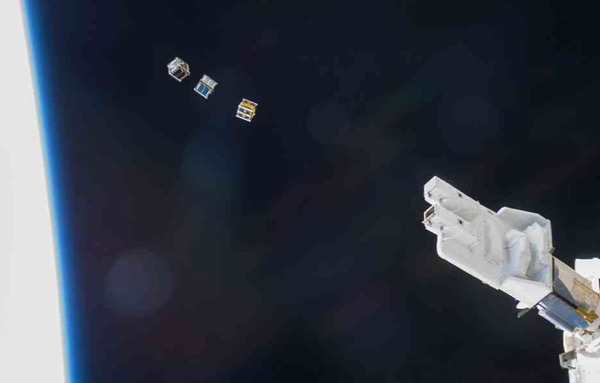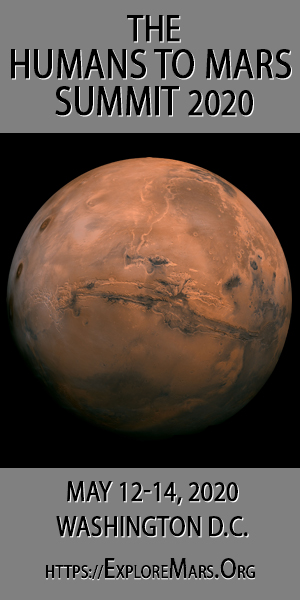Democratizing space exploration with new technologies – The Space Review

Cubesats are one example of technologies that are democratizing space, expanding access to it to more than just governments and large companies. (credit: NASA) |
by Dylan Taylor
Monday, February 17, 2020
Emergent technologies have made our world more efficient, engaging, and accessible. We’ve witnessed how innovations like artificial intelligence (AI) have transformed from largely an insider trend of the leading edge of the tech industry into more commercially viable devices, such as Amazon Echo, Siri, and on-demand machine learning from AWS. There tools have democratized the way we interact with the world.
In addition to AI, other innovative technologies have helped democratize many markets across the globe. However, the sector with, perhaps, the most notable impact in democratizing technology lies in industries that go beyond our planet.
| Small launchers can be a game-changer for operators of smaller satellites who can’t utilize larger launch vehicles waiting to fill its payload vacancies. |
The NewSpace industry—now comprised of startups, developing countries, and universities—is leading a movement of tech innovations that are helping to pave the way for the new space explorers. This new era not only focuses on lowering the barriers of entry for investors and companies, but it’s also fostering more sustainable, consumer-friendly models that promote better access to the final frontier.
Affordable launch and spacecraft systems
In the past, government agencies, who held a monopoly on space exploration, spent huge resources to reach space. Missions to the Moon during the Apollo program consumed nearly four percent of the total annual US federal budget at the time. Today, the bulk of space spending is closer to one percent of the federal budget, which has driven the need for more affordable ways to create launch and spacecraft systems. Now, much of this funding has been leveraged to commercial firms and universities so they can research and develop capability and products, including affordable launch and spacecraft systems.
With the recent privatization of the industry, NewSpace companies have built upon these launch technologies to create affordable and reusable launch systems for themselves. In the last few years alone, dozens of international companies have begun competing to see how low they can drive launch costs. For some, this means developing smaller rockets that are specifically designed to carry several dozen kilograms or less into low-Earth orbit for projected prices that are as little as $250,000. It’s a game-changer for operators of smaller satellites who can’t utilize larger launch vehicles waiting to fill its payload vacancies.
Private companies have also engineered heavier rockets to achieve economies of scale. The Falcon Heavy, for instance, is the most powerful operational rocket, built with three Falcon 9 nine-engine cores and 27 Merlin engines that generate over 5 million pounds of thrust upon liftoff to carry over 64 metric tons into orbit. On top of it all, the rocket’s efficiency and reusable technological design allows it to operate at one-third the cost of other similar rockets.
Overall, these innovations in rocket technology for both small and large payload vehicles have led to lower costs and the opportunity for more industry players to emerge.
| Democratization means nothing without the support of and collaboration with public consumers and talent. |
In the space industry, cubesats and similar nanosatellites have become a popular and cost-efficient option. These miniature satellites cost as low as $3,000 to send into space and easily fit into launch vehicles that hold larger commercial payloads, effectively lowering the cost.
Schools, universities and global corporations have launched cubesats. Housing sensors, communications receivers and transmitters help satellites study Earth and the space surrounding our home planet while testing out new systems.
Open source software
Democratization means nothing without the support of and collaboration with public consumers and talent. Open source software, whose source code anyone can peruse, modify and contribute to, allows NewSpace industries to engage directly with the public through hands-on, widely accessible opportunities that help develop and improve technology.
The Massachusetts Institute of Technology (MIT) is a big proponent of these open access projects, finding that they build online and in-real-life communities and help shape the future of NewSpace tech.
These open access resources solicit submissions from all over the world, inviting users to send their personal research concept to space. Participants, for example, can rent time on a cubesat constellation (similar to buying time on a cloud computing system). Here they can interact in open science communities with access to libraries and maker studios where users can utilize MIT’s already vast research portfolio. On top of it all, the initiative offers other integrated support systems like a STEAM outreach program with educational resources, curriculum and DIY hacker guidelines for climate-smart cubesats.
| s the private space sector becomes more engaged with Earth’s citizens, these companies will have to adjust their business models to not only fit the requirements of commercial accessibility, but also to integrate a democratic ethos in all aspects of NewSpace development, tourism, and settlement. |
With these inclusive initiatives, the future of space technology can more efficiently reach everyday people, through GPS satellites that power apps on our smartphones to space tourism that will allow people to experience the Overview Effect. Whether or not these people actually go to space, these open source platforms are a fundamental element to spur research, development and consumer-friendly space transport and products.
Open source projects are becoming such useful resources for both citizens and company running it that NASA introduced its own open source platform in 2018, hoping to source ideas for future spacecraft from anyone throughout the world. One example is the Jet Propulsion Laboratory’s Open Source Rover, which looks like the Mars Rover but acts as a teaching tool.
Looking towards the stars
Much like the expansion of the universe, these evolving technologies are causing a ripple effect throughout space exploration industries. As the private space sector becomes more engaged with Earth’s citizens, these companies will have to adjust their business models to not only fit the requirements of commercial accessibility, but also to integrate a democratic ethos in all aspects of NewSpace development, tourism, and settlement. With the ability for the private sector to operate in more collaborative and competitive ways, technology will continue to evolve exponentially and the future of humanity in space remains within our grasp.







